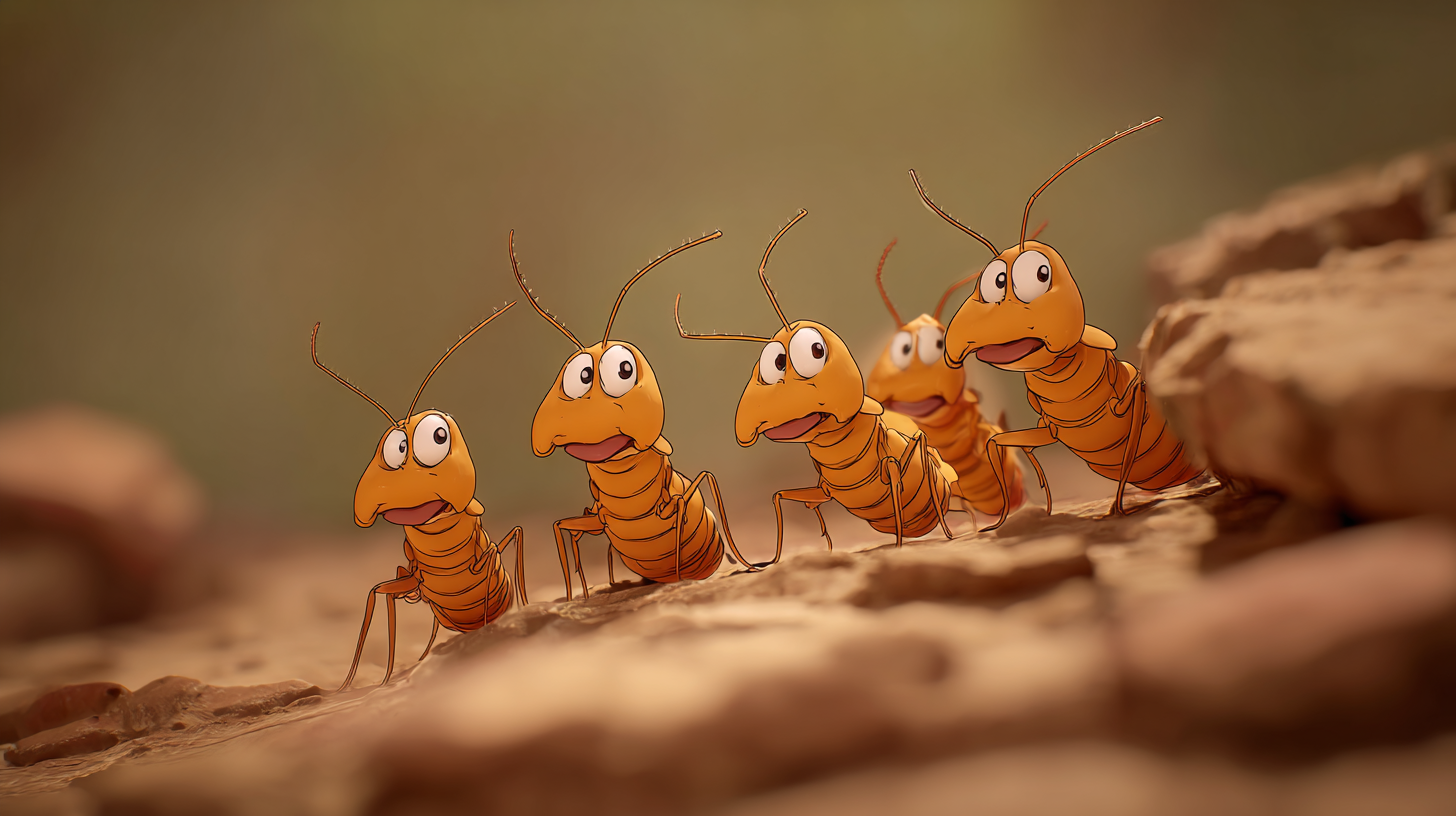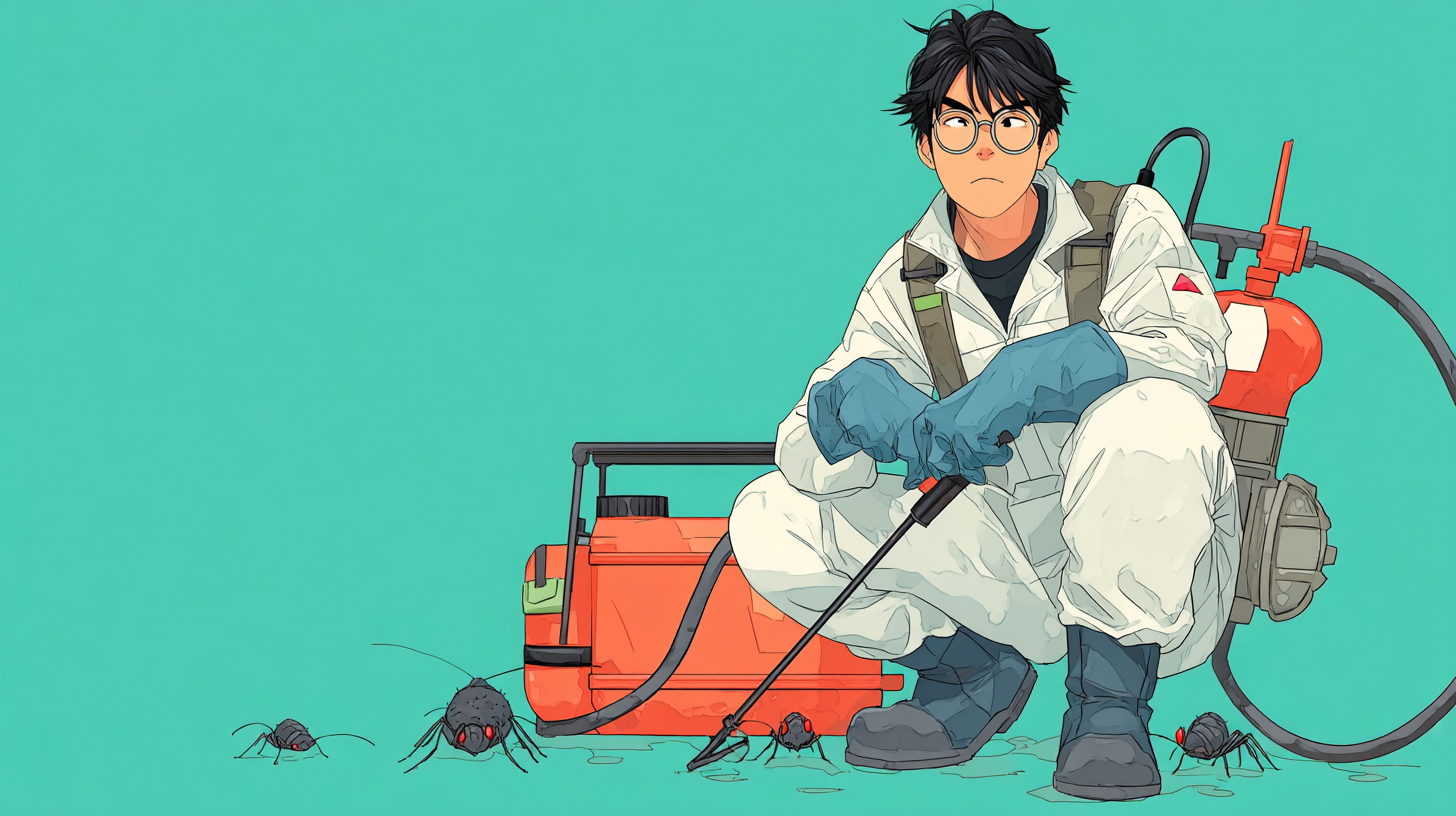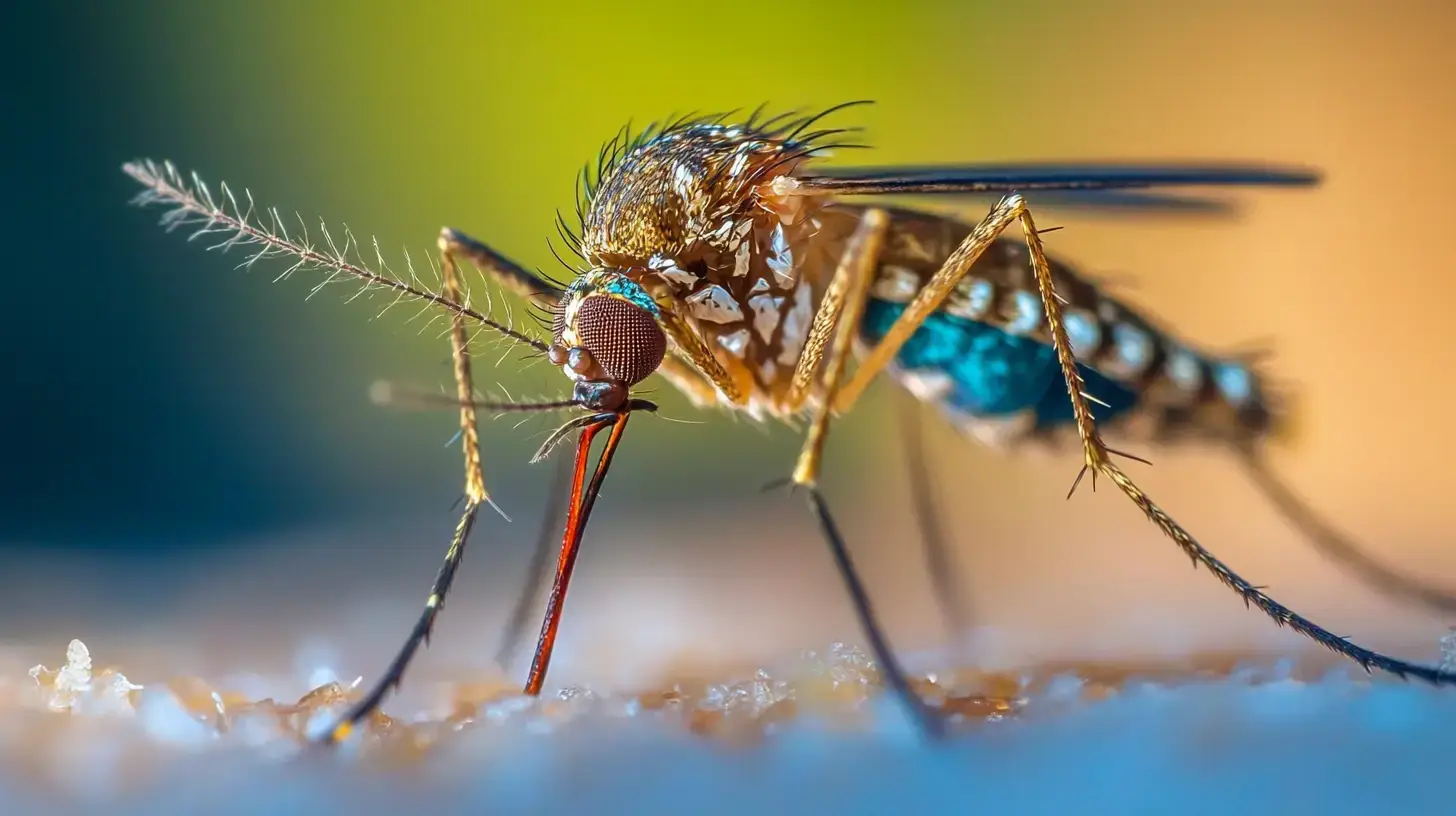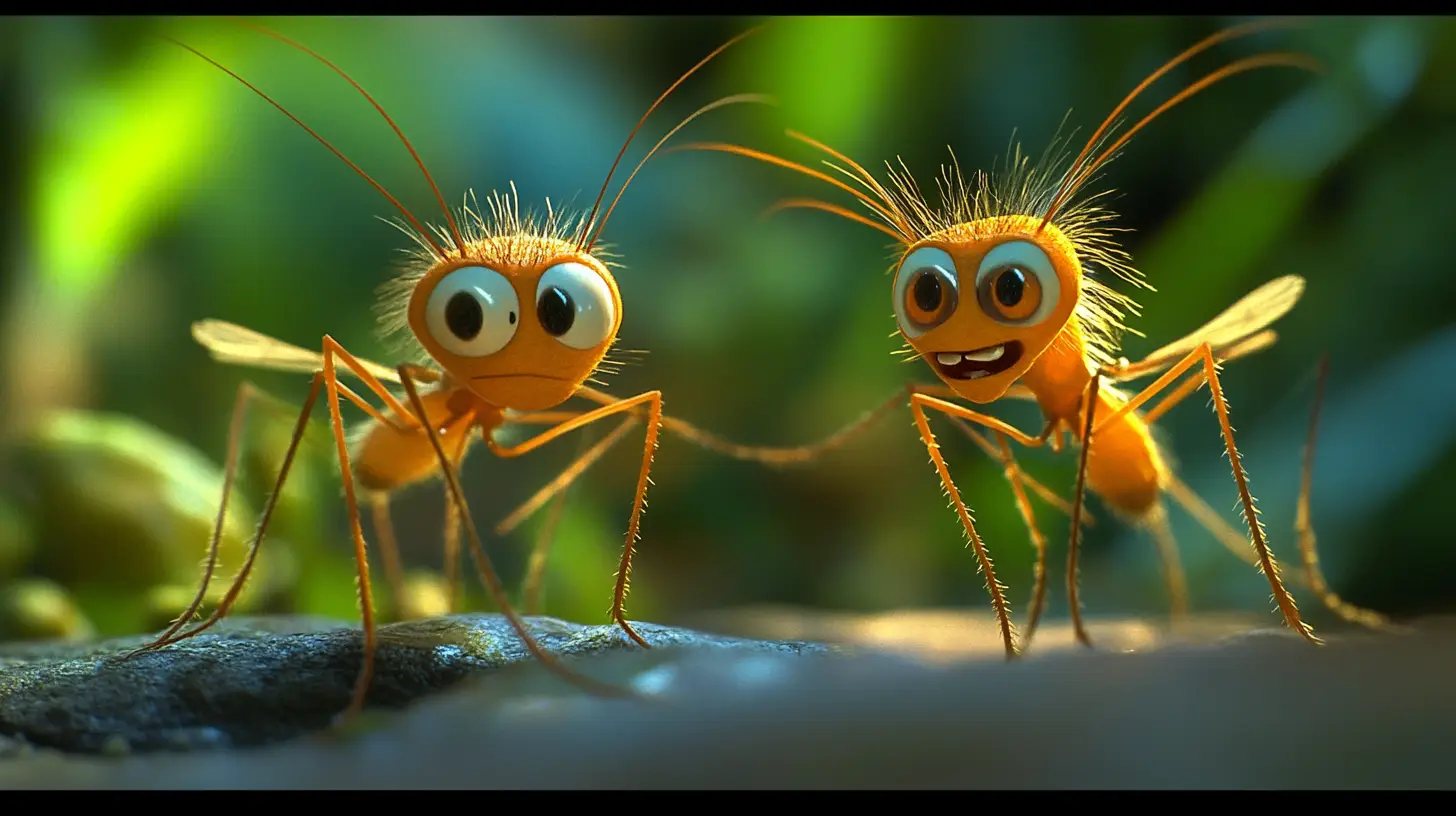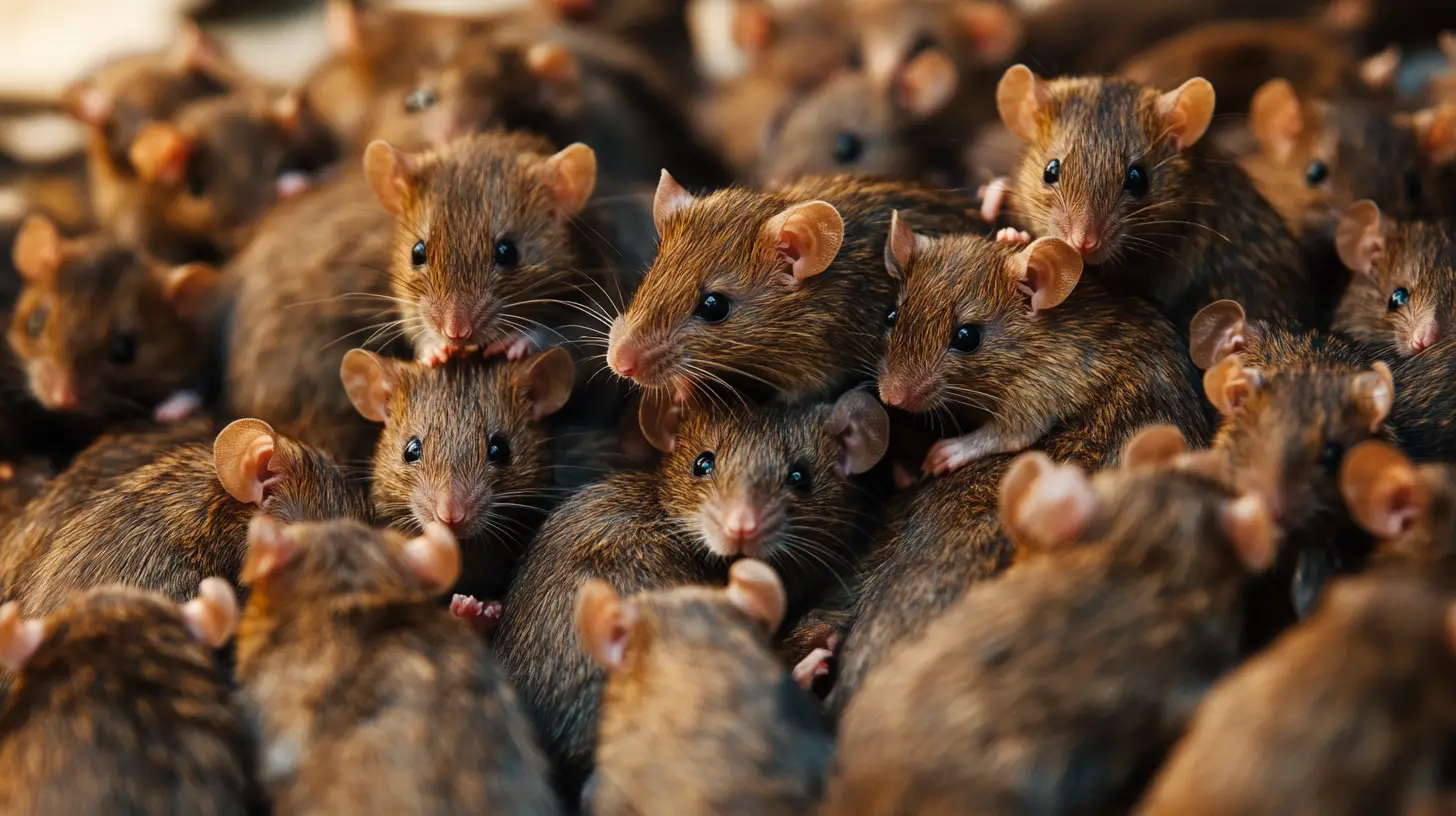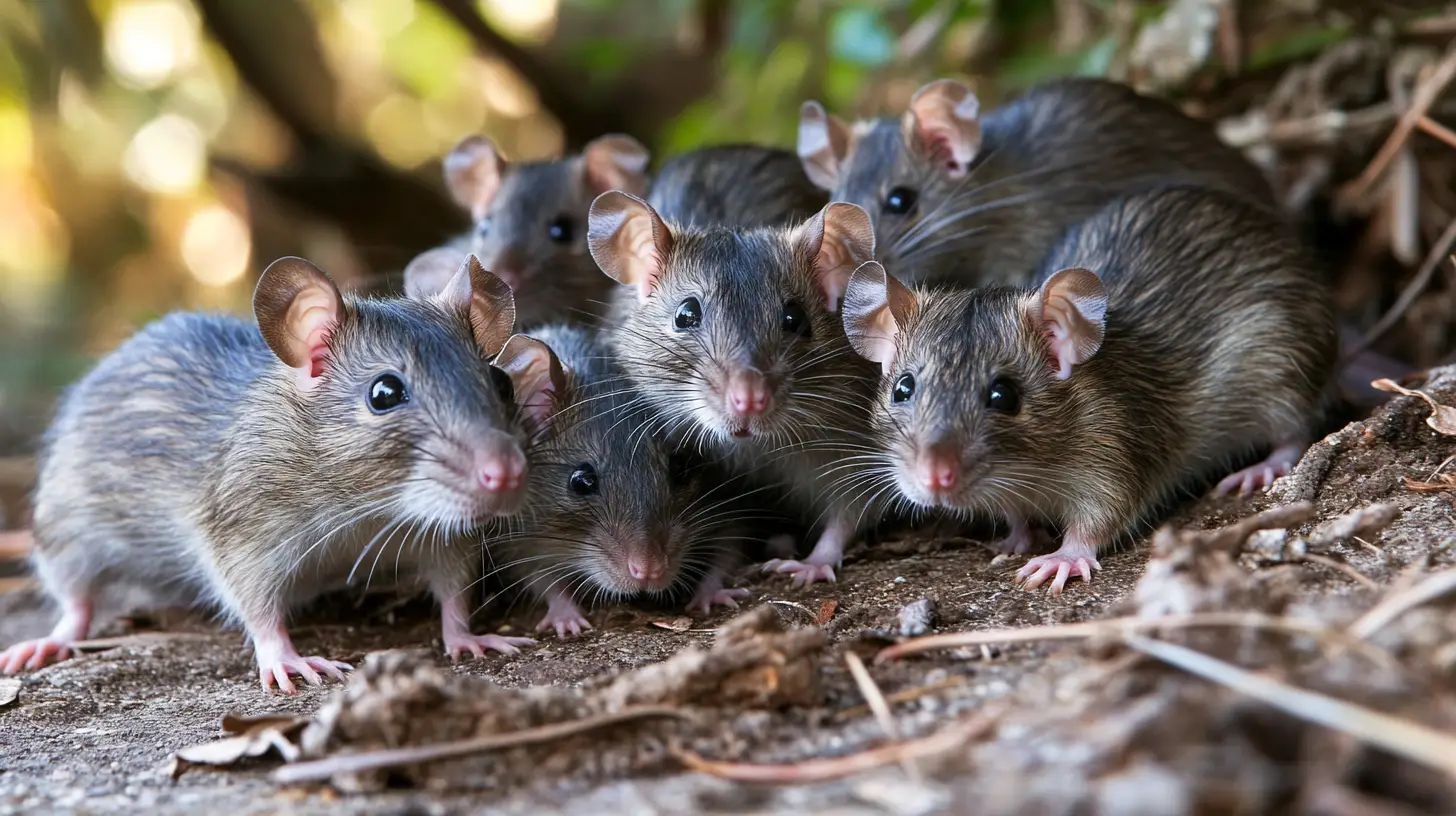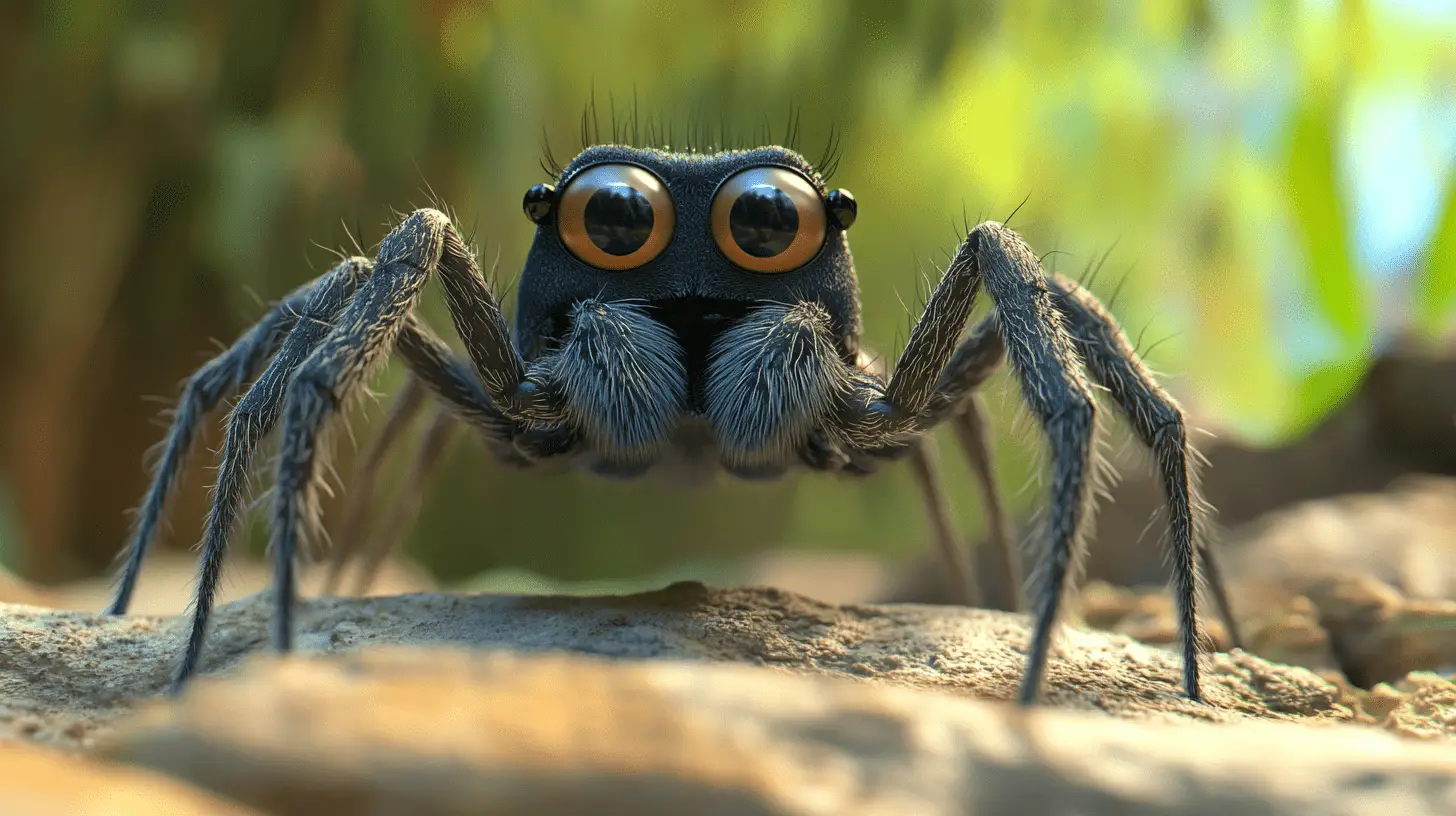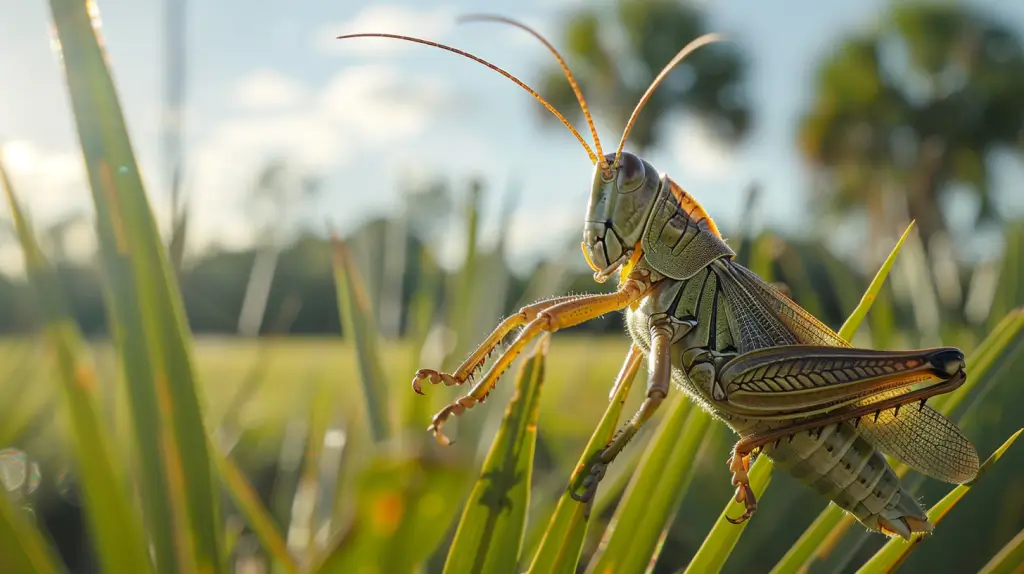
Table of Contents
Imagine you’re strolling through the lush Everglades National Park, the air thick with humidity and the symphony of wildlife all around. Suddenly, you spot a creature that looks like it leaped straight out of a sci-fi movie—a lubber grasshopper. With its vivid black and yellow-striped body, this hefty insect is hard to miss. It’s not just the colors that catch your eye; it’s the sheer size and the slow, deliberate way it moves, almost as if it’s daring you to come closer.
Lubber grasshoppers, particularly the Romalea microptera species, are fascinating yet often misunderstood. These giants of the grasshopper world can grow up to 3 inches long, making them one of the largest grasshoppers in North America. But don’t let their size fool you; they’re more than just a pretty face in the insect kingdom. These grasshoppers have a unique way of defending themselves, employing a mix of toxic chemicals and bold coloration to ward off predators.
Key Takeaways
- Vivid Appearance and Size: Lubber grasshoppers are easily recognizable due to their bright yellow and black stripes and large size, growing up to 3.5 inches long.
- Defense Mechanisms: These grasshoppers use a combination of toxic chemicals and bold coloration to deter predators.
- Life Cycle: Understanding their development stages from nymph to adult aids in effective pest management, with nymph stages being optimal for intervention.
- Behavioral Traits: Though generally solitary, they gather at night and use unique mating behaviors including the secretion of pheromones by females.
- Environmental and Economic Impact: They defoliate a wide range of plants, impacting ecosystems and agricultural productivity, necessitating strategies like biological control and habitat management.
Overview of the Lubber Grasshopper
Discovering the lubber grasshopper (Romalea microptera) offers a fascinating glimpse into nature’s intricate designs. Whether you’re intrigued by their vibrant colors or their role in ecosystems, these grasshoppers captivate with their uniqueness.
Description and Taxonomy
Lubber grasshoppers are hard to miss. They flaunt bright colors—yellow, orange, and black—that make them stand out. Males and females differ in size; males typically measure between 1.7 and 2.2 inches, while females can grow up to 3.5 inches. Even though their size, they don’t fly. Their short wings are decorative but non-functional.
Eastern Lubber Grasshopper Identification
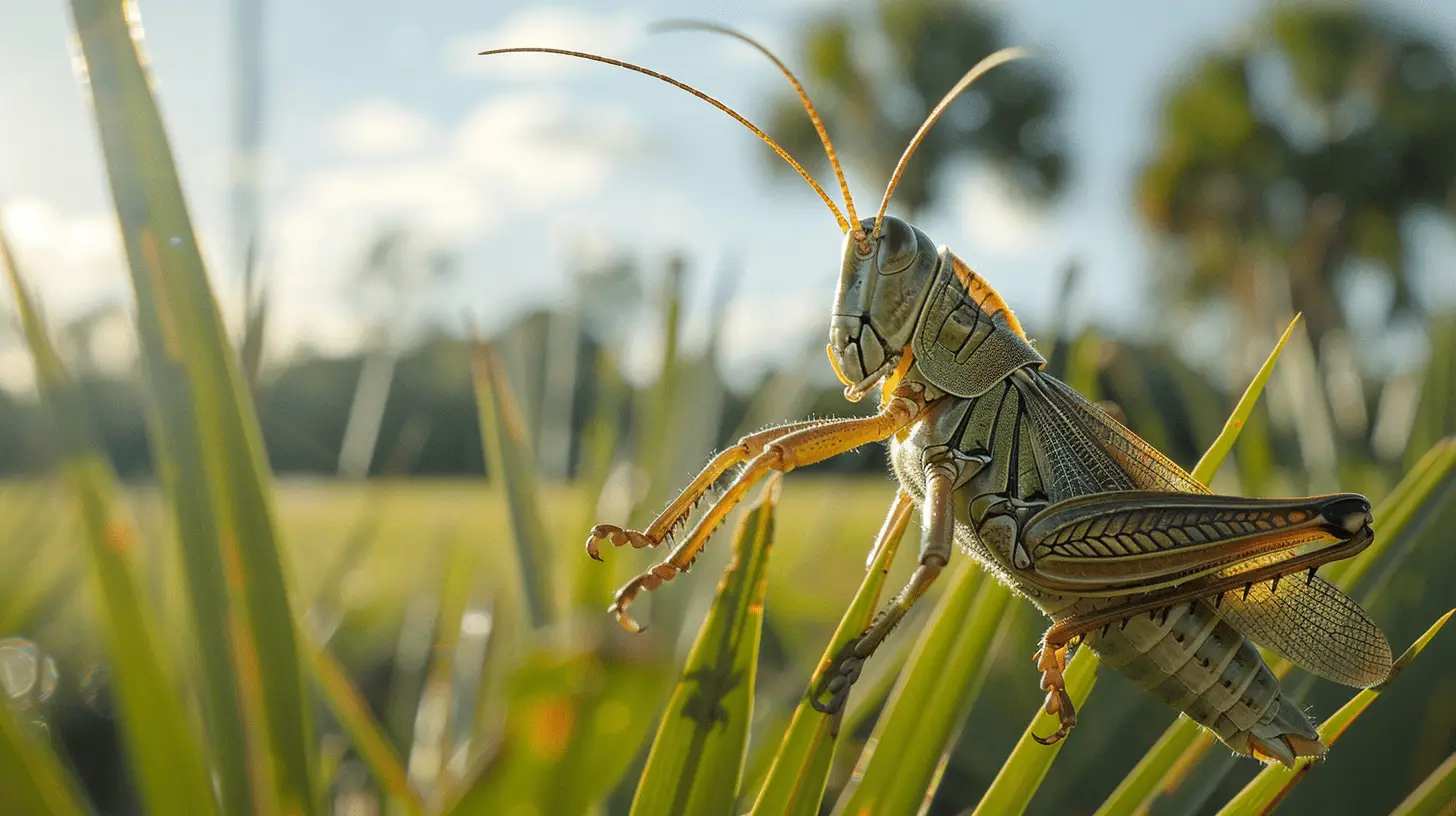
Based on the search results, here are the key points for identifying Eastern Lubber Grasshoppers (Romalea microptera):
Physical Characteristics
- Large size: Adults range from 1.75 to 3.5 inches long, with females generally larger than males
- Coloration: Adults are typically yellow or tawny with black accents; some may have darker coloration with yellow as a minor component. In northern Florida, a predominantly black form can be found
- Short wings that make them incapable of flying
- Clumsy movement – better at walking and climbing than leaping
Life Cycle
- One generation per year
- Nymphs (immature grasshoppers) are black with pink and yellow spots and bands
- Adults or nymphs present throughout most of the year in southern Florida
- In northern Florida and Gulf Coast, found from March/April to October/November, peaking in July-August
Behavior
- Often seen in large numbers, especially when nymphs emerge
- Destructive defoliators that consume leaf tissue of many plant species
- Can completely strip foliage from plants or eat irregular holes in vegetation
- Good climbers, often found on trees feeding on tender young foliage
Habitat
- Found in open pinewoods, weedy vegetation, and weedy fields
- Range includes southeastern and south-central United States, particularly Florida, Georgia, Alabama, Mississippi, Louisiana, Arkansas, and Texas
Defense Mechanisms
- Can secrete a noxious odor when threatened
- May hiss and flap their brightly colored pink-orange hindwings when alarmed
Did you know the name “lubber” hints at their clumsy nature? It’s derived from the old English word “lobre,” meaning lazy. Watching them, you’ll see they prefer walking or crawling feebly. They might seem sluggish, but they’re adept climbers.
The scientific community has seen some debate over their classification. Traditionally, Romalea microptera is the main species. But, some experts consider it synonymous with the genus Taeniopoda, encompassing about a dozen species. This has sparked discussions, supported by both morphological and genetic data, which question their separation into distinct groups.
Distribution and Habitat
Lubber grasshoppers are primarily found in the southeastern United States. You’ll often encounter them in Sarasota, where they pose significant agricultural challenges. They damage citrus trees, vegetable crops, and ornamental plants.
Their habitat isn’t limited to farmlands. These grasshoppers are also part of the diverse ecosystems in places like the Everglades National Park, contributing to the region’s rich biodiversity. The fluctuations in their population could be due to various factors, including parasites like the tachinid fly, Anisia serotina.
While their wild distributions don’t overlap, lubber grasshoppers can produce fertile hybrids at least with the western horse lubber grasshopper. This interbreeding capability highlights their close genetic relationships.
Life Cycle of the Lubber Grasshopper
Understanding the life cycle of the lubber grasshopper can help you manage these colorful yet often problematic insects more effectively. Their unique development stages make them a fascinating subject for study.
Development Stages from Nymph to Adult
Lubber grasshoppers go through distinct phases from nymph to adult. Nymphs appear almost entirely black with a vibrant yellow, orange, or red stripe running along their backs. Their youthful hue might fool you into thinking they belong to a different species. Over time, reddish accents on their pronotum and abdominal segments transition to yellow.
Nymphs molt through five instars before reaching adulthood. Adaptations during these stages include shifts in coloration and body structure. In nature, this nymphal period lasts about 45 days, but in lab conditions, it’s shortened to about 27 days. By the time they mature in early summer, these grasshoppers are large, brightly colored, and ready to reproduce. Unlike other grasshoppers, adults can’t fly but are adept climbers, making them both unique and somewhat clumsy navigators.
Reproduction Patterns
When it comes to their reproduction, lubber grasshoppers exhibit a singular generation annually. The eggs, laid post-summer, overwinter and continue developing for nearly 200 days when subjected to lower temperatures. While they don’t require a dormant period, this extended development ensures they are ready to hatch in spring, coinciding with optimal growth conditions.
Adults emerge in summer, providing an ample window for reproduction. Typically, you can observe the highest number of adults in Florida during July and August, with egg production commencing about a month after their emergence. Each mating cycle produces numerous eggs, securing the next generation’s proliferation.
By knowing these details, you can better time your pest control efforts. It’s easier to tackle these grasshoppers in their nymph stage, using insecticides with active ingredients like bifenthrin, cyhalothrin, or permethrin, as they grow more resistant to chemicals with age.
Behavioral Traits
Understanding the behavioral traits of the lubber grasshopper helps you appreciate this intriguing insect’s lifestyle and interactions.
Social Behavior
Lubber grasshoppers are generally loners, but nighttime sees them gathering around large bushes. This behavior likely boosts mating chances and makes their aposematic displays, which warn predators of their toxicity, more . Did you know that these gatherings serve as a natural deterrent to predators? Nature’s way of saying, “Don’t mess with us!”
Mating and Pheromones
Both males and females of the lubber grasshopper exhibit promiscuous behavior. Males display sexual aggression, attempting to mount any nearby lubber without prior signals. Why should you care about this? The answer lies in the female’s ability to attract males through a unique pheromone. Once attracted, copulation can last up to 24 hours, intensifying the bonds and increasing mating success for this species.
Daily Activities and Movement
The lubber grasshopper prefers to walk rather than jump. Imagine a creature designed to hop but choosing to stroll instead. They are also proficient climbers, usually feeding on the low branches of trees. Polyphagous by nature, they consume around 60% of plant species and occasionally feast on carrion, mushrooms, and feces. These eating habits may seem gross, but they highlight the grasshopper’s survival adaptability.
Defense Mechanisms and Predators
Lubber grasshoppers might appear bold with their striking colors, but they’re not the most agile. When threatened, they spread their wings, hiss, and secrete foul-smelling toxins. This impressive display not only protects them but also makes most predators reconsider their dinner choices. With defenses like these, it’s no wonder they have few natural enemies.
Interacting with the lubber grasshopper on this level gives you a greater appreciation for these fascinating insects. Even though their slow moves and odd habits, these grasshoppers know how to stand out and survive in the wild.
Environmental Impact and Economic Importance
Understanding how the lubber grasshopper affects both the environment and the economy is crucial for assessing its overall impact, especially in regions like the southeastern United States.
Effects on Vegetation and Ecosystems
Lubber grasshoppers are notorious defoliators, stripping plants of their foliage. They target a wide range of over 100 plant species from 38 families, including shrubs, herbs, and grasses. This extensive diet means they can devastate entire vegetation patches, especially affecting weeds and semi-aquatic plants.
When large numbers of these grasshoppers descend on an area, they can alter the local ecosystem. By consuming vast amounts of plant material, they reduce habitat for other herbivores and disrupt the balance of native plant species. This defoliation can lead to increased soil erosion, as plants’ stabilizing roots are no longer present to hold soil in place.
Management and Control Methods
Given their impact, managing lubber grasshopper populations is essential. Various strategies have emerged:
- Biological Control: Natural predators and parasites play a significant role in regulating grasshopper populations. Parasitic flies like Anisia serotina and the sarcophagid Blaesoxipha opifera have been found to parasitize lubbers effectively.
- Chemical Control: Pesticides can be used, but their application needs to be carefully managed to avoid harming non-target species and the environment.
- Habitat Management: Altering habitats to make them less hospitable to lubbers is a non-chemical strategy. This might include removing weedy or semi-aquatic plants that serve as food sources or breeding grounds.
- Mechanical Control: In garden and small-scale agricultural settings, physical removal of lubbers can be , though labor-intensive.
Frequently Asked Questions (FAQs)
What repels lubber grasshoppers?
Lubber grasshoppers can be repelled using active ingredients like bifenthrin, carbaryl, cyhalothrin, esfenvalerate, permethrin, and spinosad. Treat young lubbers in moist, weedy areas for best results.
What bird kills lubber grasshoppers?
Loggerhead Shrikes are known to kill lubber grasshoppers. They impale the grasshoppers and leave them in the sun to neutralize the toxins before consumption.
Where do lubbers lay eggs?
Female lubber grasshoppers lay eggs in summer, depositing them in shallow underground pods containing 30 to 50 eggs each, guarded by a male.
Are lubber grasshoppers poisonous to dogs?
While lubber grasshoppers have chemicals that make them distasteful, they are generally not harmful to dogs if ingested.
What eats lubber grasshoppers?
Lubber grasshoppers have few natural predators. The Loggerhead Shrike is the only bird known to eat them.

